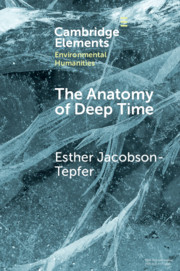Element contents
The Anatomy of Deep Time
Published online by Cambridge University Press: 22 February 2020
Summary
- Type
- Element
- Information
- Online ISBN: 9781108855518Publisher: Cambridge University PressPrint publication: 12 March 2020
References
- 1
- Cited by



